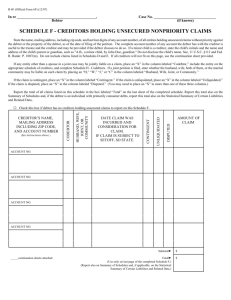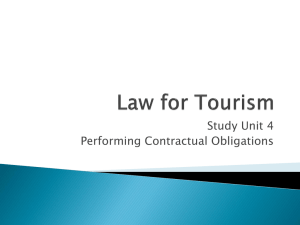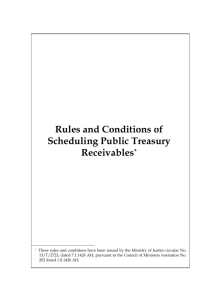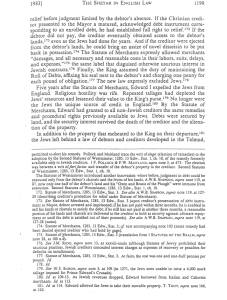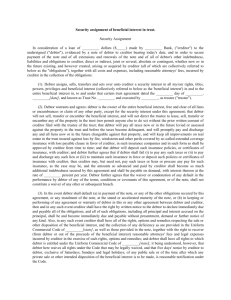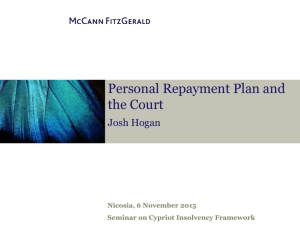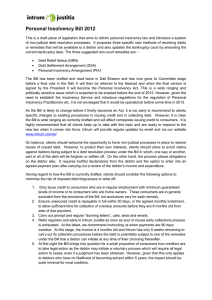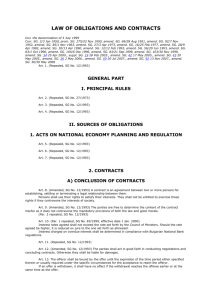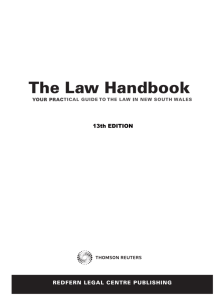In addition to considering the period when the preference was given
advertisement
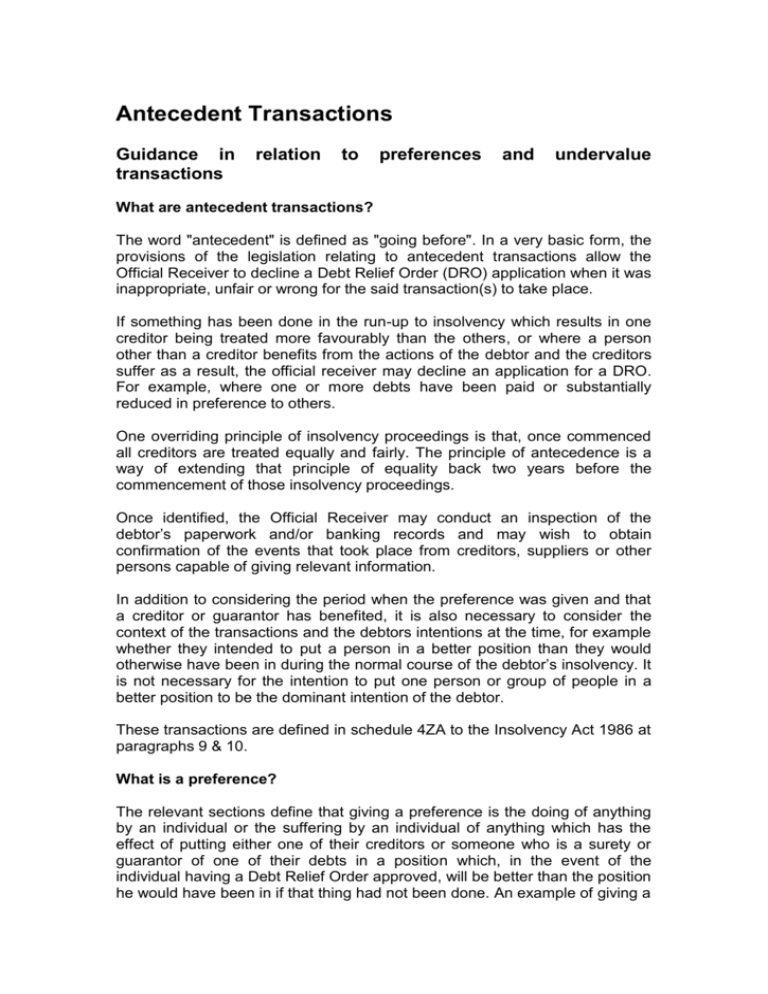
Antecedent Transactions Guidance in transactions relation to preferences and undervalue What are antecedent transactions? The word "antecedent" is defined as "going before". In a very basic form, the provisions of the legislation relating to antecedent transactions allow the Official Receiver to decline a Debt Relief Order (DRO) application when it was inappropriate, unfair or wrong for the said transaction(s) to take place. If something has been done in the run-up to insolvency which results in one creditor being treated more favourably than the others, or where a person other than a creditor benefits from the actions of the debtor and the creditors suffer as a result, the official receiver may decline an application for a DRO. For example, where one or more debts have been paid or substantially reduced in preference to others. One overriding principle of insolvency proceedings is that, once commenced all creditors are treated equally and fairly. The principle of antecedence is a way of extending that principle of equality back two years before the commencement of those insolvency proceedings. Once identified, the Official Receiver may conduct an inspection of the debtor’s paperwork and/or banking records and may wish to obtain confirmation of the events that took place from creditors, suppliers or other persons capable of giving relevant information. In addition to considering the period when the preference was given and that a creditor or guarantor has benefited, it is also necessary to consider the context of the transactions and the debtors intentions at the time, for example whether they intended to put a person in a better position than they would otherwise have been in during the normal course of the debtor’s insolvency. It is not necessary for the intention to put one person or group of people in a better position to be the dominant intention of the debtor. These transactions are defined in schedule 4ZA to the Insolvency Act 1986 at paragraphs 9 & 10. What is a preference? The relevant sections define that giving a preference is the doing of anything by an individual or the suffering by an individual of anything which has the effect of putting either one of their creditors or someone who is a surety or guarantor of one of their debts in a position which, in the event of the individual having a Debt Relief Order approved, will be better than the position he would have been in if that thing had not been done. An example of giving a preference may be the payment in full of a creditor, where if that had not been done, the individual would have only been able to pay a small percentage of that debt, by ensuring that a pro rata distribution was made where all creditors are treated equally. That creditor is clearly better off, as is any guarantor of that debt. Effect of pressure by creditor(s) When an individual has made a preference by paying a debt because of threats by a creditor to commence legal proceedings for a recovery, it may be construed that the intention was to eliminate that threat and not to prefer the creditor. However, pressure from creditor(s) is not necessarily a good defense where it was not the only motive. Even when an individual was subject to a court order, the preference may be challenged especially if it is obvious that the individual failed to defend the proceedings to the advantage of the creditor. As regards suspect transactions, consideration should be given as to whether the intention was to maintain good relations with a particular creditor (e.g. a bank or supplier). The motives of preferring a creditor and maintaining good relations can co-exist with the latter being evidence of the former. Types of undervalue transaction The Act defines transactions made by an individual which may be defined as an undervalue transaction. Firstly, there is a gift or transaction for which the individual received no consideration. This appears to be straightforward to understand, where no benefit has been derived from the payment or transaction, but it is necessary to know whether any indirect benefit has been derived or consideration less that market value. Secondly, there is a transaction which the debtor has entered into in consideration of marriage or the formation of a civil partnership. Thirdly there is a transaction whereby the individual has received inadequate consideration. It is necessary to establish what consideration was received and what ought to have been received and to decide whether the discrepancy in value is "significant". There is no guide in deciding if the disparity is significant. As far as Debt Relief Orders are concerned, it is provided that a transaction in consideration of marriage is to be regarded as a transaction at an undervalue. Debt Relief Orders and Antecedent Transactions When assessing a debtor’s affairs with a view to determining a DRO application, each case will be judged on its own merits, on a case by case basis. To assist intermediaries in this area, there follows a list of the types of questions that need to be considered and will possibly be asked by the DRO Unit once an application has been submitted. Therefore debtors should be encouraged to retain all documentary evidence that might support their responses and also be aware that the Official Receiver will thoroughly investigate all such matters, before determining an application, and may require sight of this documentation. Preferences Was the debtor insolvent at the time the payments were made? Why did the debtor make the payment/s? To whom did they make payments? Dates the payments were made and amounts? Was there any agreement drawn up with respect to the payments? Why didn’t the debtor distribute the funds to all of their creditors pro rata? Was there any creditor pressure? If a preference has been made to an associate. (relative) is there any documentary evidence that the funds repaid, were in fact owed? How did the debtor obtain the funds in order to make the payment/s i.e. what was the source of the funds? Undervalue Transactions Was the debtor insolvent at the time of the transfer? Why did the debtor transfer the property in question? When did they transfer the property and to whom? Was it valued at the time of transfer and if so provide documentary evidence? What was the value of the property transferred and any evidence to support this valuation? How much consideration, if any, did the debtor receive and evidence to support this? What has the debtor done with any funds received? Did the debtor seek legal advice in relation to the transfer? Does the debtor retain any interest in the property in question?



